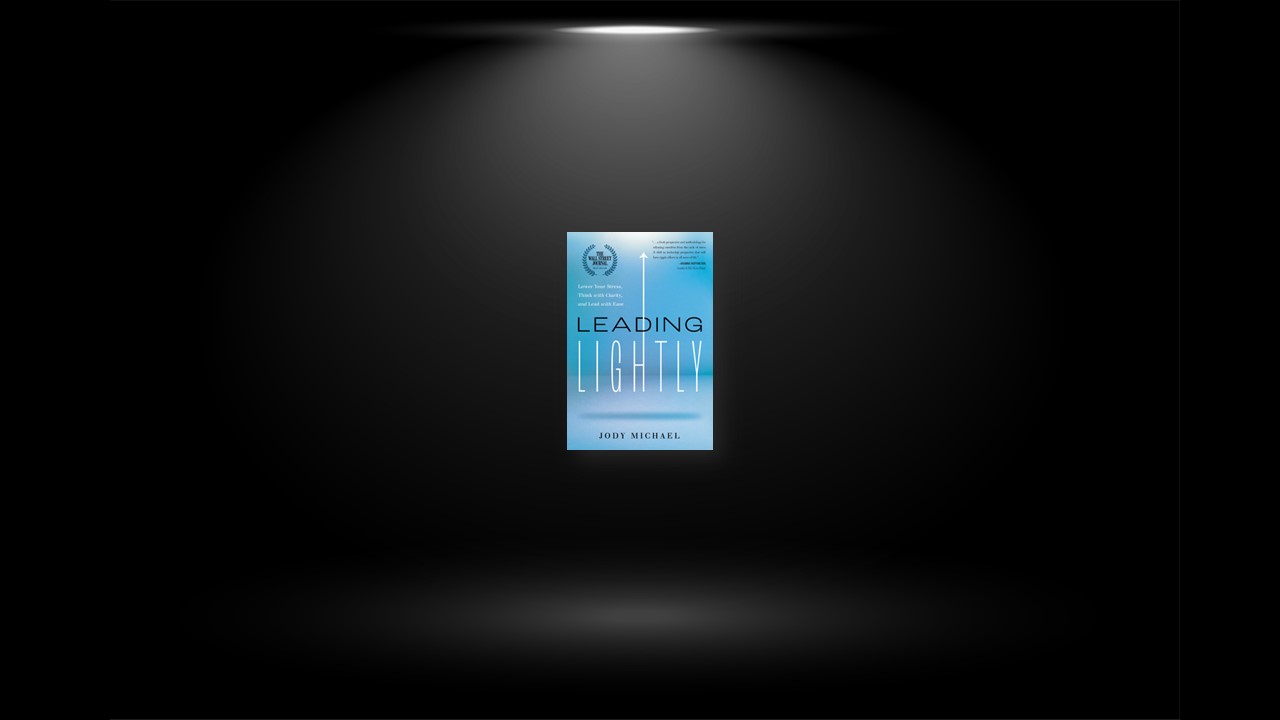How Learning to Lead Lightly Can Help You
Pain in the workplace is not mandatory. You can stop the cycle.
The strongest driver of results—in your leadership, your team, and your organization—is what you choose to think and feel in each moment.
Mental fitness measurably reduces individual and organizational pain points and optimizes performance. It becomes much easier to create alignment and move faster.
Leadership is about impact and influence. Increasing your mental fitness will improve both.
Creating Mental Fitness
Mental fitness yields optimal performance. For you, optimal performance means your mind is clear, sharp, and focused. You’re using all of your brain for the issue at hand.
Being mentally fit will not eliminate all the challenges in life. Unfortunately, nothing can do that. But being mentally fit will allow you to deal with those challenges better, faster, and with less stress.
Mental fitness, like physical fitness, is measurable.
Mental fitness is composed of five muscles. Two choices—personal accountability and helpful versus impeding beliefs—and three skills—self-assessing your internal state, holding multiple perspectives, and moderating your physiology. You can flex each individually as well as holistically.
Pinpointing the Pain
It’s time to break the taboo of talking about pain in a corporate setting.
Your body’s catabolic energy state is the fight-or-flight response and is destructive to the body. Its anabolic energy state is healing and restorative, and enables sustained high performance over time.
When you perceive a strong threat—real or imagined—it feels the same, and you become emotionally triggered, an extreme catabolic state. Your performance is significantly compromised.
Organizations are filled with catabolic leaders who perform in suboptimal ways and negatively impact others.
Executive pain is very expensive for organizations in both obvious and hidden ways, causing destructive ripple effects throughout the organization.
Deep, sustainable change requires a systemic perspective and approach.
You have the choice, in every moment, to create pain or to create performance; your choice will affect not only your own well-being but also that of the organization you lead.
Creating Performance
In your role as a leader, you have one or more recurring patterns where you predictably feel a negative, lingering emotional charge (including being numb or checked out).
The core of what causes you pain is your perceptual lens, your set of ingrained beliefs about yourself, others, and the world around you.
Your capacity to notice when your perceptual lens fails you, and to change the lens, is the key to your personal and professional transformation in your performance, interpersonal relationships, and life.
Mental fitness is all about using choice and skill to “upgrade” your underlying operating system—including your perceptual lens—ultimately changing unproductive pathways in your brain to create a “new you.”
When you are faced with an unwanted circumstance or event, you apply mental fitness to interrupt your spiral of catabolic energy. You pause, change your perceptual lens, and create what happens next within a more empowered, productive framework.
To “upgrade” your underlying operating system, you will leverage your brain’s neuroplasticity—its capacity to reconfigure itself.
Choice is fundamental, and that choice will be difficult at first, like hacking a new path through a thick, gnarly forest when you could have just taken the easy and familiar super-highway.
Choosing Accountability
The first step in taking personal accountability is to stop telling stories to explain away why something went wrong (or to put yourself in the best light).
Face reality head-on. Own your situation.
Personal accountability means, among other things, you keep your promises.
If you break a promise, or otherwise do something wrong, apologize.
Apologizing is a five-step process: State what you failed to do and apologize to everyone involved; take full responsibility; acknowledge the breakdowns you must have caused for others; ask what actions can be taken to repair the damage that was done; and make a new promise, if appropriate.
Stop enabling and rescuing those who need to take accountability of their own.
Selecting a Helpful Perceptional Lens
You choose what you believe about yourself. And it is indeed a choice.
Perceptional lenses come in two flavors. A helpful perceptual lens is empowering. It increases your options and choices, and expands your possibilities. Impeding beliefs and lenses decrease options and often result in you being stuck.
Consistently challenge your perceptional lens by asking two questions:
Is this lens impeding or helpful?
Did I choose this lens, or was imposed on me by the way I was brought up and/or past experiences?
Accurately Self-Assessing
Your internal state is the running commentary in your head; your moods and the emotions that you feel, as well as your physical sensations, such as rapid heartbeat and shallow breathing.
Self-assessing your internal state means that at any given moment you can “observe” yourself and articulate what you find.
To discover your internal state, you ask: What am I thinking right now; what is my mood; what do I feel in my body?
Learning to identify your thoughts is the most important and impactful part of mental fitness.
Engaging with Multiple Perspectives
Effective leadership requires you to engage the muscle of multiple perspectives in two different ways: with the people you work with, and how you think when you are triggered.
When organizational upheavals occur, and they will, engage your lens in this order:
First lens: What’s best for the organization?
Second lens: What’s best for my team?
Last lens: What’s best for me personally?
Yes, this is difficult, but it exemplifies a mature leader.
There is always another point of view. Always remember there could be other perspectives than your own.
Remember the lens you use affects what you see—and what you don’t—as well as how you respond. That’s why you want to employ multiple lenses.
Calming Your Physiology
When used correctly, breathing can help you think more clearly, feel more energized, and be more effective in your interactions.
Breathing reduces your negative, unproductive feelings such as anger and anxiety.
There are many techniques that will calm your body. But diaphragmatic breathing is the most direct and accessible way to modulate your body’s triggered state.
Employing effective breathing is a two-step process. First, stop whenever you are doing that has put you in a triggered state, and then take in a breath and hold it for a full six seconds.
This method of oxygenation is the fastest way to physiologically get your body out of a triggered state.
How to Perform at Your Best and Change Your Brain
You perform at your best when you rapidly transform negative moods, or negative physiological states, as soon as they start by holistically applying all five muscles of mental fitness.
That transformation occurs in two steps, requiring you to remember ABC and the word SEE.
Assess your mood and notice that you are emotionally triggered.
Breathe in and hold for six seconds to calm your physiology.
Choose to take accountability for shifting into a healthier mindset.
Sense the current lens you are using.
Explore other lenses.
Elect a helpful one.
Learning how to do all this takes practice. There is no way around it.
The payoff is worth it.


